(SPEECH)
[00:00:00.38] Hi, I'm Nate, and welcome to our makeshift ice shack at L.L.Bean headquarters.
[00:00:05.51] Are you thinking about getting into ice fishing, but not sure where to start? You've come to the right place.
[00:00:10.28] Matt, our fishing merchant and registered Maine guide, would usually be sitting here in this warm seat. But, instead, we sent him onto the ice to help show you ice fishing gear and techniques. Let's go.
(DESCRIPTION)
[00:00:22.81] Title, L.L. Bean. How to Get Started Ice Fishing. Step 1.
(SPEECH)
[00:00:27.26] All you have to do is walk out onto the ice and start fishing, right? Not so fast, here are five things to consider to keep safe, warm, and comfortable-- one, fishing license and regulations, two, ice thickness, three, traction, four, warm clothing, and five, check the weather.
[00:00:48.47] It's not as fun as the actual fishing, but you need to buy a fishing license before going out. Also, make sure you have the latest ice fishing regulations with you. The number of fish you can keep, minimum lengths, and even types of bait allowed can vary from lake to lake. There will be a test on the regulations later. Nah, just kidding.
[00:01:06.02] It's critical to test the thickness of the ice as you venture out. You want a solid 4 inches to be safe. Don't assume it's safe just because you saw people fishing on a nearby pond or lake. Use your ice auger or ice chisel, special ice fishing tools that make the holes through the ice, to intermittently check the ice thickness until you reach the spot you want to fish. Be sure to wear some traction spikes to prevent falls. They easily slip over your boots for on-demand grip.
[00:01:32.58] It seems obvious to say you need warm clothing, but many days out have been cut short by not wearing enough warm gear. Here's what you'll need-- an insulated jacket, a waterproof wind-blocking shell, insulated pants or bibs, base layers, warm socks, gloves or mittens, a hat, a neck gaiter, or balaclava, insulated waterproof boots, hand and toe warmers, and don't forget sunscreen lip balm and sunglasses on sunny days.
[00:02:01.02] My final bit of safety advice is to check the weather forecast. Make sure you're ready for whatever Mother Nature will throw at you. It is winter, after all. And be sure to bring extra warm clothing gloves or mittens hats and socks in case something gets wet. Well, those are fish food.
(DESCRIPTION)
[00:02:19.91] Step 2.
(SPEECH)
[00:02:20.91] You don't need too much gear to hit the ice. Let's talk about the 6 pieces of gear you will need-- hand or motor-powered, an ice auger will let you quickly drill a hole through the ice. If you want exercise, you can use an ice chisel. But if the ice is thick, it'll take a long time and a lot more effort to get your holes done.
[00:02:40.23] Tip ups. Let you fish under the ice without needing to hold on to the line. When you get a bite, a brightly colored flag pops up to let. We'll talk about how they work and how to use them in a little bit.
[00:02:51.54] A jig rod with a reel loaded with line lets you fish more actively than waiting for a tip up flag to fly. This kind of fishing requires certain types of lures, like this Castmaster lure, which is perfect for ice fishing. Consult a local tackle shop for other lures that might work where you're fishing.
[00:03:06.15] A good bait bucket will keep your bait alive all day. Make sure you also have a net so you can easily scoop bait when you need it. You'll find bait at your local tackle shop. Ask the folks there what kind and size they would recommend.
[00:03:18.03] Make the day on the ice extra fun by cooking up a nice meal on your camp stove. Ice fishing is also super fun for kids, so make some hot chocolate and have some tasty snacks for them. A portable shelter is great for getting out of the weather on cold, windy days. They usually have windows, so you can keep an eye on your tip ups, or you can drill a hole inside the shelter and jig for fish while keeping out of the weather. A sled will make hauling your gear out onto the ice a breeze. If you don't want to invest in a sled, a pack basket or two will also do the job.
(DESCRIPTION)
[00:03:49.47] Step 3.
(SPEECH)
[00:03:50.79] OK, now that how to be safe, and you've got all the gear, how do you catch fish? Here are five easy techniques to learn. This is a tip-up. Tip-ups are usually used outside of an ice shack, and consist of a spool filled with ice fishing line, and a clear monofilament leader with a hook tied on. Just bait the hook and attach some weighted split shot, that's this part right here, to make sure the bait gets to the depth that you want.
[00:04:17.13] Next step is to pull out the flag and set it like so. Now be careful of your face and your eyes while you set the flag, it's very easy to accidentally set these off. The tip-up sits over the hole and above the ice so you can easily see it. When a fish takes the bait, and pulls the line, the flag pops up alerting you that you have a bite.
[00:04:38.85] Before you bait the hook and start fishing, you need to figure out how deep the water is. Simply add a clip on weight to your bait hook, lower it into the hole, and let it sink to the bottom, you'll know you've hit the bottom when the tension releases. Reel the weight back up. Now you know how deep the water.
[00:04:53.07] As a general rule of thumb, baiting your hook 18 to 24 inches off the bottom is a good place to start. Try to choose an energetic and lively bait fish that's going to swim vigorously. Scoop it out with a net, and gently hold it with your thumb and forefinger. With your other hand, insert the hook into the bait just below the dorsal fin.
[00:05:11.55] This is the tricky part, don't go too low on the bait's body where the vital organs are, or too high where its spine is, you want it swimming freely and enticingly for the bigger fish you're after. A jigging rod is basically clear short spinning rod with a small reel, preloaded with monofilament. It's pretty simple, just tie-in a lure, drop it to the bottom, reel up a couple feet, and start jigging the lure up and down. You can vary the depth and experiment with different types of lures. I also like to move around a lot to different holes until I find some fish.
[00:05:41.89] Now the fun part, when the flag flies on a tip up, run over to the tip up and observe what the spool is doing. If it's spinning quickly, it means the fish is taking line. Remove the tip up from the water and give the line a quick yank to set the hook. If the line isn't moving, I like to give it a few seconds before picking up the tip-up.
[00:05:59.41] Now just steadily pull the fish up to the hole. If it's a big one that wants to make a run, just let it go, so you don't break the leader. Once you've pulled it onto the ice, use forceps to pull the hook out. There you have it. We covered how to stay safe and keep warm, bringing gear you trust, and handy ice fishing techniques. That's everything you need to get started ice fishing. Oh, that's one of my traps, got to run.
(DESCRIPTION)
[00:06:23.85] Nate dons his hat and dashes out.
(SPEECH)
[00:06:26.20] Drop us a line and tell us your favorite ice fishing stories in the comments. And don't forget to and subscribe so you don't miss our next video. Visit llbean.com/explore for more tips and inspiration.
(DESCRIPTION)
[00:06:38.44] A bird's-eye view of a fishing encampment on an icy field. Fishermen are moving about, threading through their tents and gear set-ups.
How to Stay Warm & Safe (& Legal)
Before you start fishing, be sure to take care of these 5 important tasks:
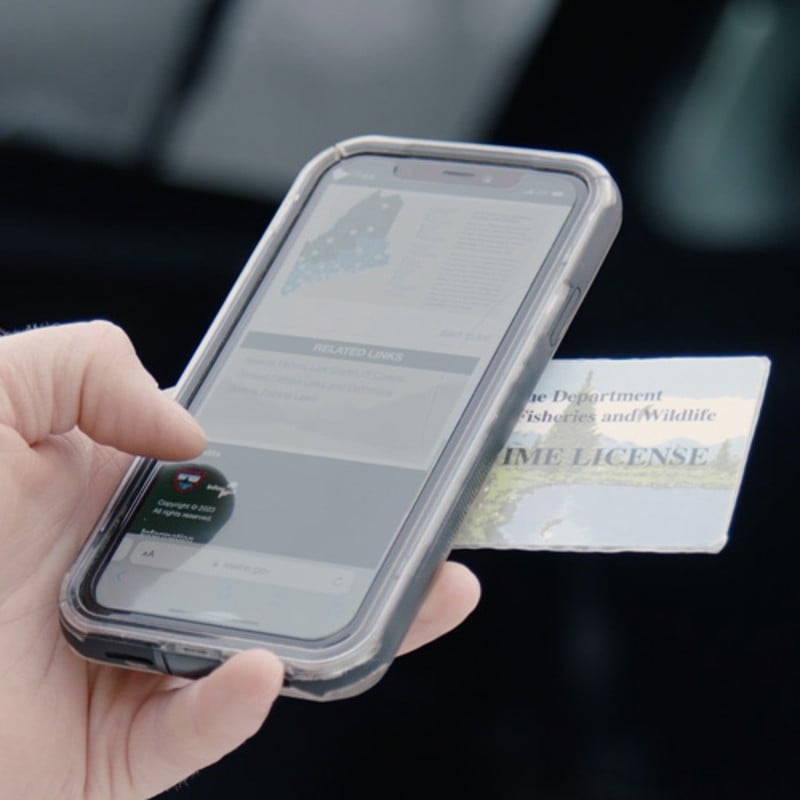
1. Fishing License/Regulations
You need to buy a fishing license before hitting the ice. Also, make sure you have the latest ice fishing regulations with you. The number of fish you can keep, minimum lengths and even types of bait allowed can vary from lake to lake.
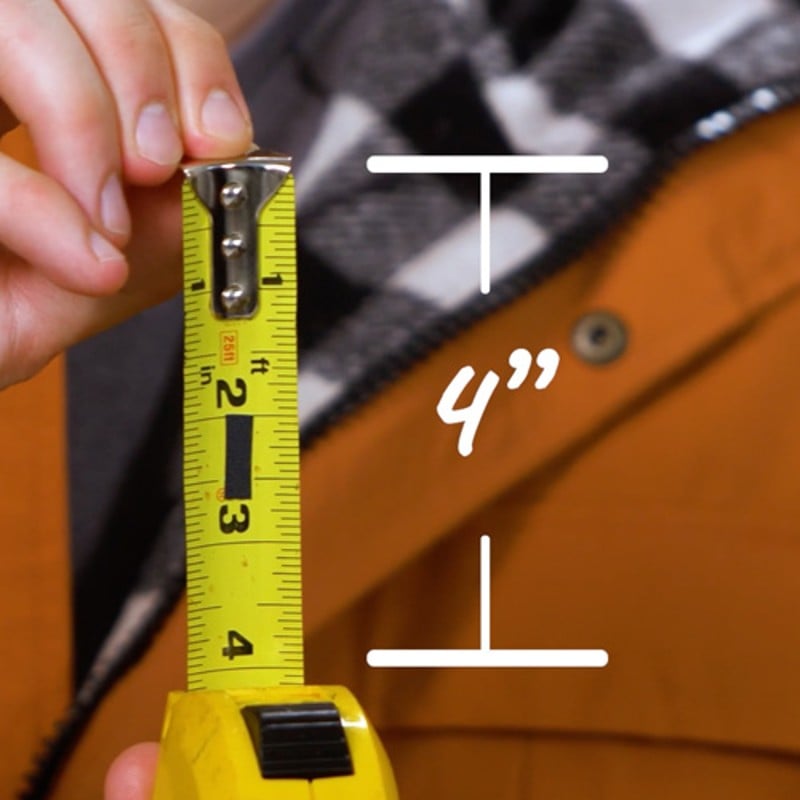
2. Check the Ice Thickness
It’s critical to test the thickness of the ice as you venture out. You want a solid 4 inches to be safe. Don’t assume it’s safe just because you saw people fishing on a nearby pond or lake. Use your ice auger or chisel to intermittently check the ice thickness.
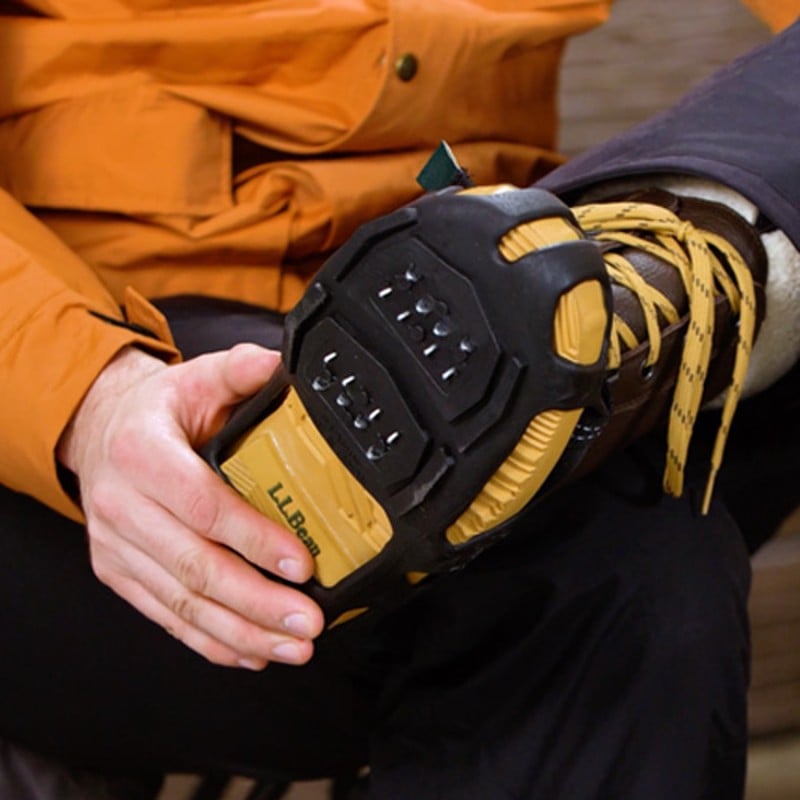
Be sure to wear a traction device on your boots to prevent falls. They easily slip over your boots for on-demand grip. Just remember to take them off before you go home.
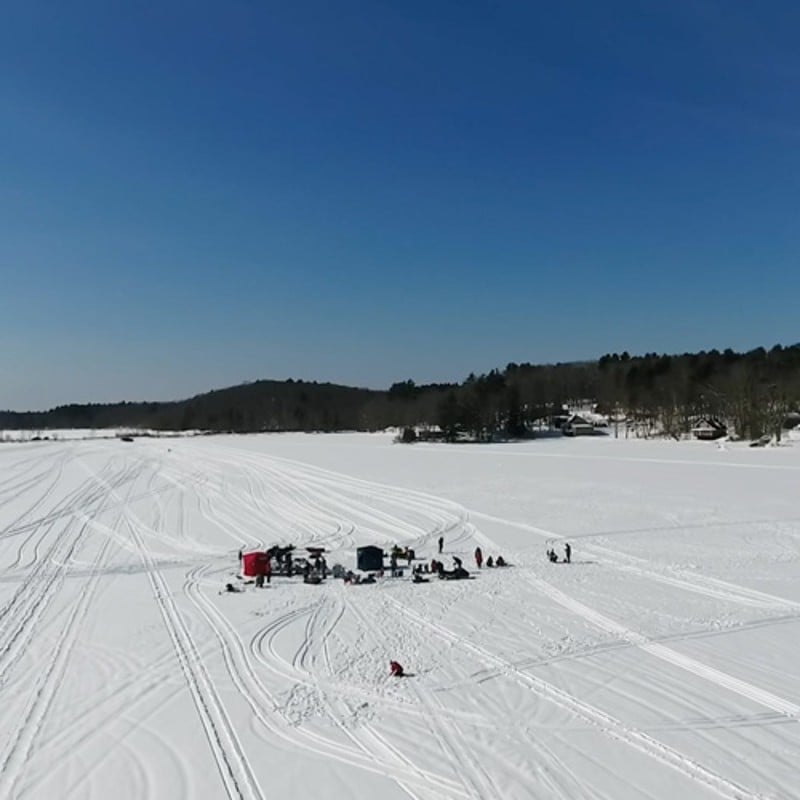
4. Check the Weather
It’s important that you check the weather forecast before you go. This way, you’ll be ready for whatever Mother Nature throws at you. And be sure to bring extra warm clothing, gloves/mittens, hats and socks in case something gets wet.
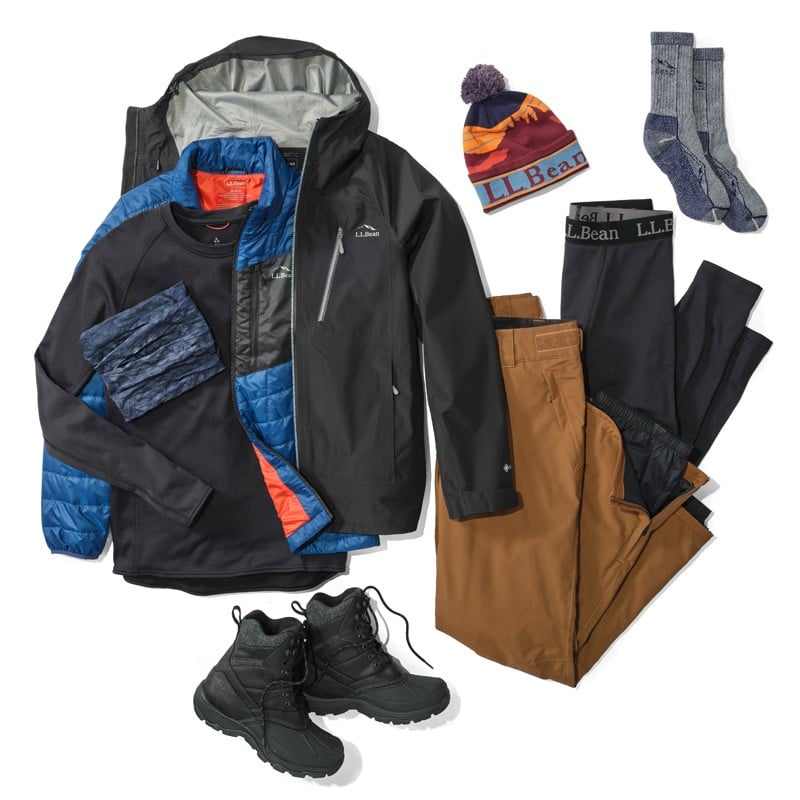
5. Warm Clothing
Many days on the ice have been cut short by not wearing enough warm gear. Here’s what you’ll need:
Insulated Jackets:
Waterproof, Windblocking Shells:
Insulated Pants/Bibs:
Base Layers:
Warm Socks:
Gloves or Mittens:
Hat:
Winter Scarves & Neck Gaiters:
Insulated, Waterproof Boots:
The Gear You Need
These pieces of gear will help ensure you have a fun and comfortable fishing trip, even if you don’t catch any fish.

Ice Auger
An ice auger will let you quickly drill a hole through the ice. If you want exercise, you can use a chisel but if the ice is thick, it will take a long time to get your holes.

Tip-Ups
Tip-ups let you easily fish live bait under the ice. When you get a bite, a brightly colored flag pops up to let you know there’s a fish on.

Jig Rod & Lures
A jig rod with a reel loaded with line lets you fish more actively than waiting for a tip-up flag to fly. You can easily fish different depths with an assortment of lure.

Bait Bucket
A good bait bucket will keep your bait alive all day. Make sure you have a small net to easily scoop bait. Ask your local tackle shop what kind of bait they would recommend.

Camp Stove/Food/Hot Drinks
Ice fishing is a great activity for kids so make it extra fun and tasty by cooking up a nice meal, making some hot chocolate and handing out some tasty snacks.

Shelter
A portable shelter is great for getting out of the weather on cold, windy days. They usually have windows so you can keep an eye on your tip-ups, or you can drill a hole inside the shelter and jig.

Sled
A sled will make hauling your gear out onto the ice a breeze. Make sure it’s large enough to carry everything.

Pack Basket
If you don’t want to invest in a sled and like to keep things simple, a pack basket or two will do the job.
Techniques You Need to Know
While ice fishing is fairly simple, there are a few techniques that will help increase your chances for success.
1. How to Use a Tip-Up
Tip-ups consist of a spool filled with ice fishing line and a 6 or 7-foot section of clear monofilament leader with a hook tied on. Just bait the hook and attach some weighted split shot about 3 feet up the leader to make sure the bait gets to the depth you want. The tip-up sits over the hole and above the ice so you can easily see it. When a fish takes the bait and pulls line, the flag pops up, alerting you to the bite.
2. Setting the Depth
Before you start fishing, you need to figure out how deep the water is. Simply slip the eyelet of a sinker over your bait hook, lower it into the hole and let it sink to the bottom. Now you know how deep the water is. You’ll want to set your bait about 18 inches to 2 feet above the bottom.
3. Choosing Bait & Baiting the Hook
Try to choose an energetic and lively bait. Scoop it out with the net and gently hold it with your thumb and forefinger. With your other hand, insert the hook into the bait just below the dorsal fin. This is the tricky part. Don’t go too low on the bait’s body where its vital organs are or too high where the spine is. You want it swimming freely and enticingly for the bigger fish you’re after.
4. Jigging
Jigging is easy, just tie on a lure, drop it to the bottom, reel up a couple feet and start jigging the lure up and down. You can vary the depth and experiment with different types of lures. It’s also a good idea to move around a lot to different holes until you find some fish.
5. Landing a Fish
When the flag flies on a tip-up, run over and observe what the spool is doing. If it’s spinning quickly, it means the fish is taking line. Gently pick up the tip-up and give the line a quick yank to set the hook. If the line isn’t moving, give it a few seconds before picking up the tip-up. Now just steadily pull the fish up to the hole. If it’s a big one that wants to make a run, just let it go so you don’t break the leader. Once you’ve pulled it onto the ice, use forceps to pull the hook out.
Now that you know what you need, you can head out onto the ice with confidence that you’ll have fun and hopefully catch some fish!
Planning some fishing adventures? Get outfitted with everything you need.


